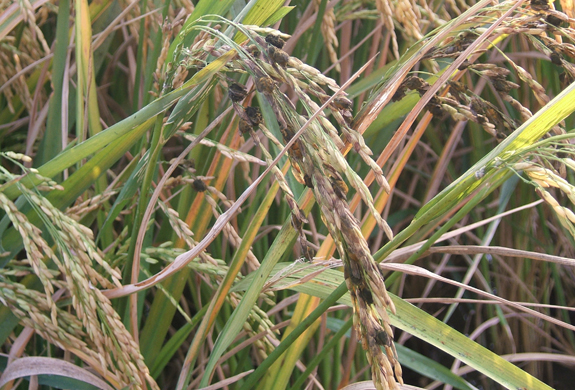
Occurrence
False smut of rice affects rice panicles and is known to cause a 44% grain loss. This disease is reported in most rice-growing areas of the world. The major symptom is the conversion of individual grains into smut balls, which results in sterility of the florets. The false smut disease was reported for the first time from India (TN) in 1878.
Symptom
Plants infected with false smut have individual rice grain transformed into a mass of spore balls. These spore balls are initially orange, and then turn greenish black when mature.
In most cases, not all spikelets of a panicle are affected, but spikelets neighboring smut balls are often unfilled.
Individual rice grain transformed into a mass of velvety spores or yellow fruiting bodies which enclose floral parts. Mature spores orange and turn yellowish green or greenish black. Only few grains in a panicle are usually infected and the rest are normal.
Causal organism
Ustilaginoidia virens (cooke) Takah
Disease cycle
The primary infection is thought to be occurred through the ascospores produced from the perennating sclerotia. Secondary infection is through the chlamydospores. The chlamydospores become air borne during the flowering season of the crop, falls on the inflorescence and cause infection.
Factors Favorable
Soil moisture and soil temperature greatly influence the disease and optimum temperature for disease development is 25-350 C. Excessive dose of nitrogenous fertilizer leads to higher disease incidence. It is reported that rainfall and cloudy day during flowering stage to maturity increases the disease.
False Smut of Rice




